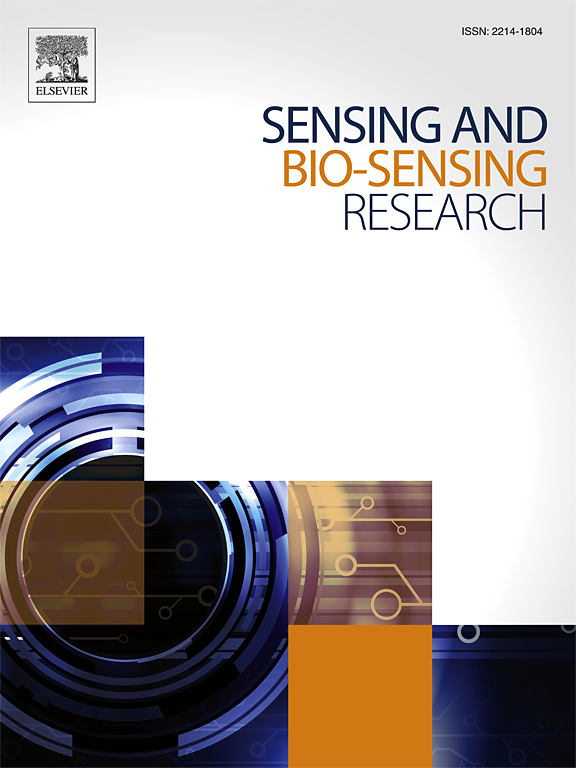利用机器学习和电子鼻对鸡肉进行质量评估
IF 5.4
Q1 CHEMISTRY, ANALYTICAL
引用次数: 0
摘要
肉类是高度易腐的食品,在各种储存条件下容易受到微生物污染。零售和工业水平的质量评估通常依赖于感官特性、气相色谱和细菌总数,所有这些都需要训练有素的人员和大量的资源。因此,需要一个更有效和可靠的系统来确定鸡肉质量。这项研究调查了电子鼻系统的使用-一种传感器阵列,可以检测气味并生成数据,然后通过机器学习算法对其进行分析,以预测鸡肉的新鲜度。利用6个MQ气体传感器和1个湿度温度传感器开发了电子鼻系统。数据采集时间为15天。为了评估机器学习算法的性能,测试了不同的数据分割方法,以了解它们对模型准确性的影响。随机森林在随机分割数据上达到100%的准确率,在非随机分割数据上达到69%的准确率。支持向量机,使用递归特征消除技术,达到78.5%的准确率,没有随机分裂。本研究还回顾了现有文献,强调随机数据分割不适用于电子鼻数据。总的来说,研究结果表明,电子鼻系统与适当的数据处理和机器学习技术相结合,可以有效地评估鸡肉的新鲜度,可能为家禽业提供有价值的工具。本文章由计算机程序翻译,如有差异,请以英文原文为准。
Quality assessment of chicken using machine learning and electronic nose
Meat is highly perishable food and prone to microbial contamination under various storage conditions. Quality assessment at both retail and industrial levels often relies on organoleptic properties, gas chromatography, and total bacterial count, all of which require trained personnel and significant resources. As a result, there is a need for a more efficient and reliable system to determine chicken quality. This study investigates the use of an electronic nose system—a sensor array that detects odors and generates data, which is then analyzed by machine learning algorithms to predict chicken freshness. An electronic nose system was developed using six MQ gas sensors and one humidity temperature sensor. Data was collected from chicken samples over a period of 15 days. To evaluate the performance of the machine learning algorithms, different data splitting approaches were tested to understand their impact on model accuracy. Random Forest achieved 100 % accuracy with randomly split data and 69 % accuracy with non-randomly split data. Support Vector Machine, using the recursive feature elimination technique, attained 78.5 % accuracy without random splitting. The study also reviewed existing literature, highlighting that random data splitting is not suitable for electronic nose data. Overall, the findings suggest that the electronic nose system, combined with appropriate data handling and machine learning techniques, can effectively assess chicken freshness, potentially offering a valuable tool for the poultry industry.
求助全文
通过发布文献求助,成功后即可免费获取论文全文。
去求助
来源期刊

Sensing and Bio-Sensing Research
Engineering-Electrical and Electronic Engineering
CiteScore
10.70
自引率
3.80%
发文量
68
审稿时长
87 days
期刊介绍:
Sensing and Bio-Sensing Research is an open access journal dedicated to the research, design, development, and application of bio-sensing and sensing technologies. The editors will accept research papers, reviews, field trials, and validation studies that are of significant relevance. These submissions should describe new concepts, enhance understanding of the field, or offer insights into the practical application, manufacturing, and commercialization of bio-sensing and sensing technologies.
The journal covers a wide range of topics, including sensing principles and mechanisms, new materials development for transducers and recognition components, fabrication technology, and various types of sensors such as optical, electrochemical, mass-sensitive, gas, biosensors, and more. It also includes environmental, process control, and biomedical applications, signal processing, chemometrics, optoelectronic, mechanical, thermal, and magnetic sensors, as well as interface electronics. Additionally, it covers sensor systems and applications, µTAS (Micro Total Analysis Systems), development of solid-state devices for transducing physical signals, and analytical devices incorporating biological materials.
 求助内容:
求助内容: 应助结果提醒方式:
应助结果提醒方式:


